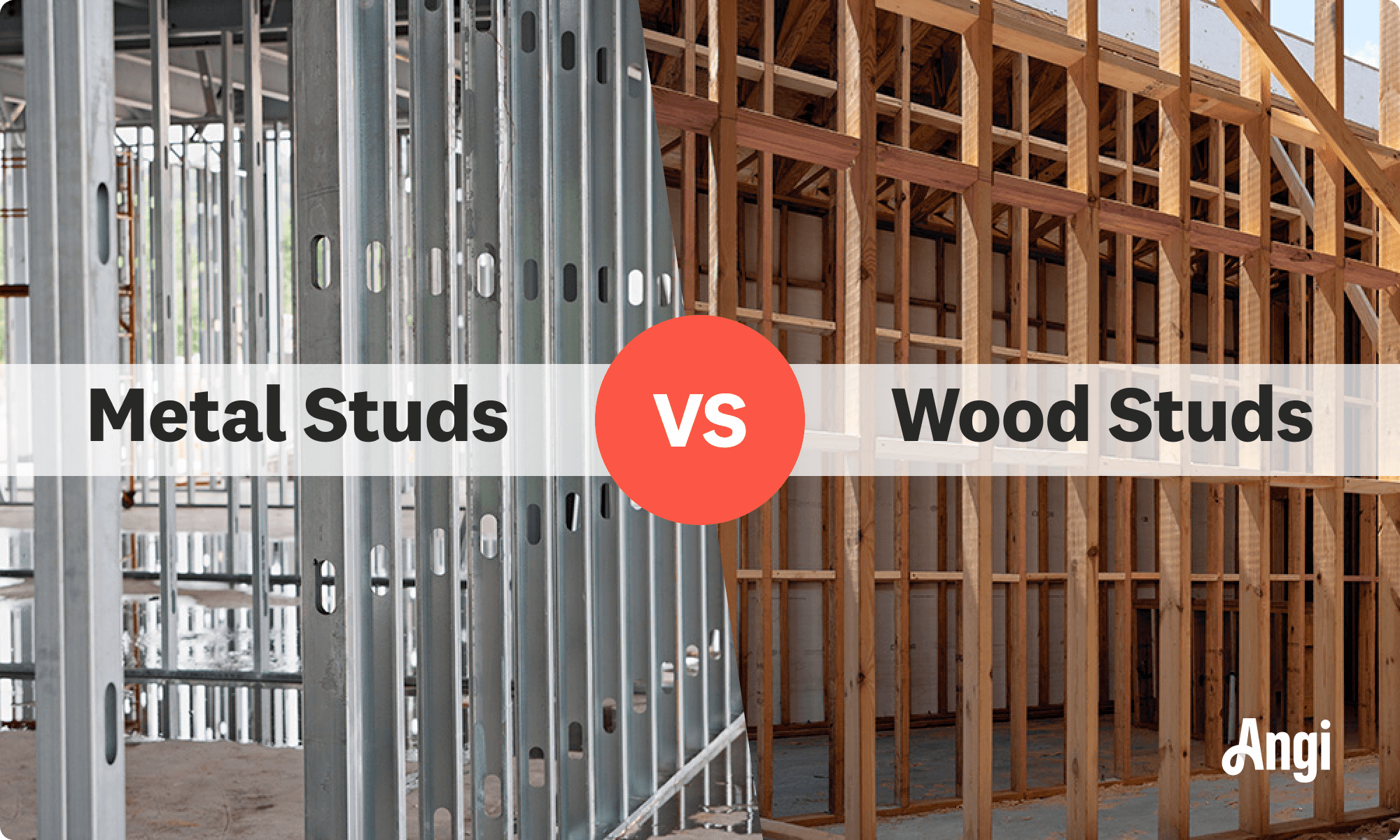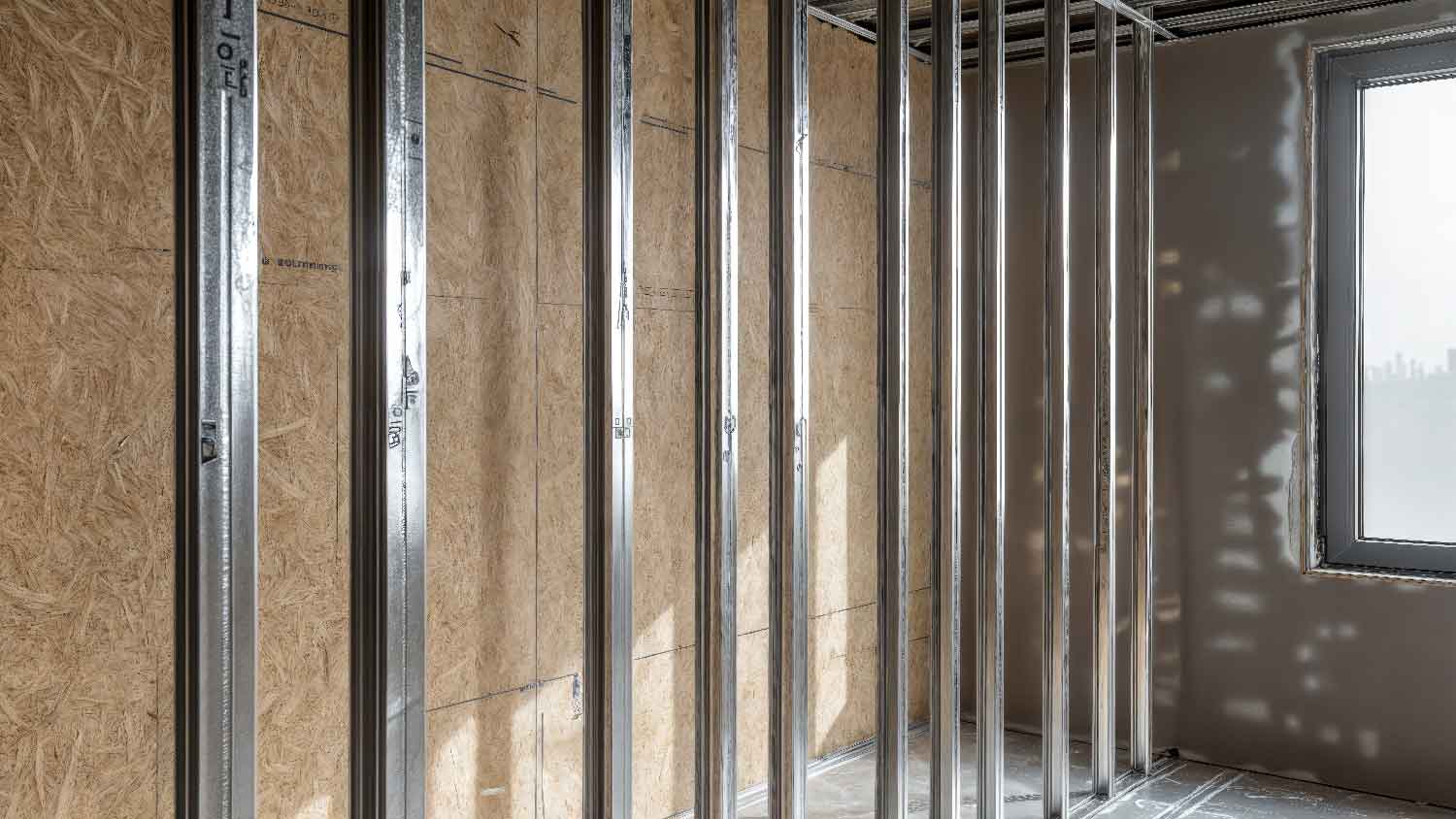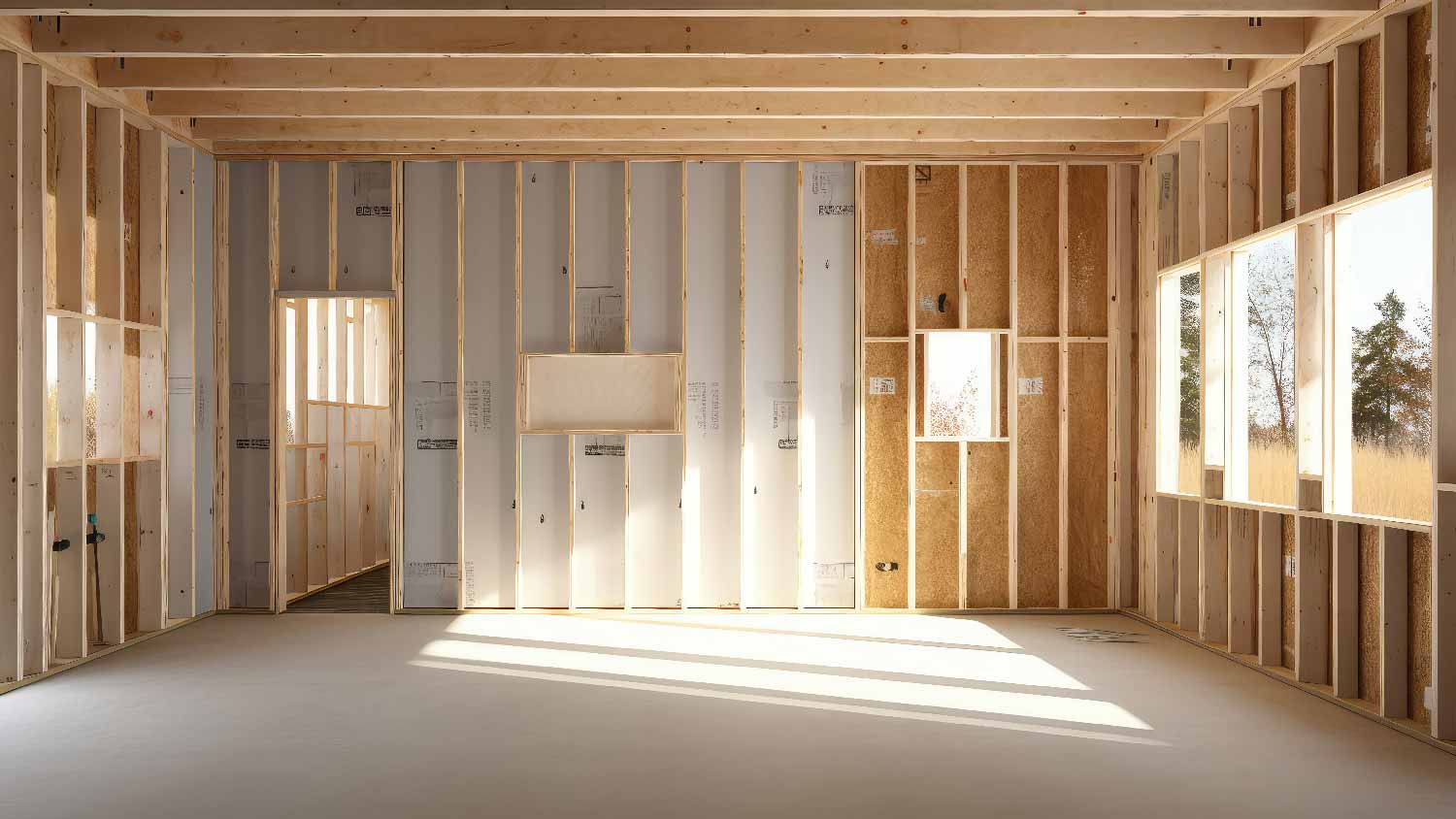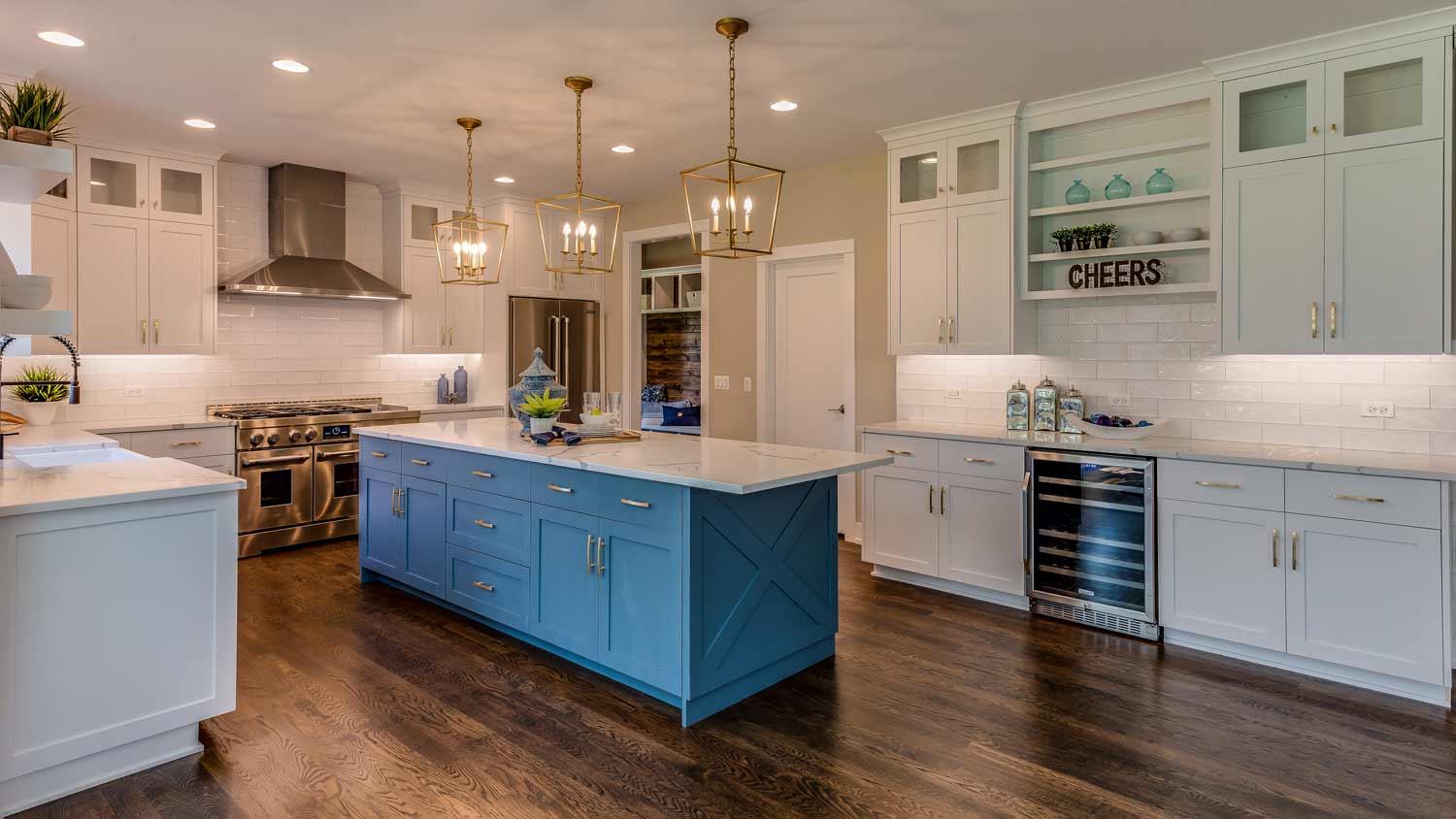
Home elevator costs depend on the size and type of lift, if it needs retrofitting, and the number of floors. Our guide outlines all residential elevator costs.
Nailing the best framing choice


Most homeowners use wood studs because they perform better for load-bearing properties than metal.
Metal studs boast better durability and resistance to moisture, pests, and fire than wood studs.
Wood stud framing costs between $1 and $5 per square foot.
Metal studs are on the higher end at $3.50 to $6.50 per square foot.
Choosing between metal studs versus wood studs for your home's framing can impact everything from cost and durability to ease of installation and long-term maintenance. While wood studs have long been the go-to for home construction, metal studs are becoming increasingly popular thanks to their moisture resistance and fire safety benefits. Each material has its own strengths and trade-offs, and understanding the differences can help you make the right choice for your needs and budget.

Wood studs are more common in homes because they’re affordable, easy to cut and install with standard tools, and strong enough to support heavy loads like shelves or TVs. Metal studs are slightly more expensive and require special tools for cutting, but they're lighter, straighter, and resistant to issues like rot, fire, and termites. For most homeowners and DIYers, wood remains the go-to choice, but metal can be a smart option in areas prone to moisture or pests.

Metal studs are lightweight steel framing components used for building interior, non-load-bearing walls in residential homes. Made from galvanized steel, they’re designed to resist warping, rot, termites, and fire, making them a durable option, especially in basements, bathrooms, or other moisture-prone areas.
Metal studs are screwed together rather than nailed, which can make installation a bit different from wood. While more common in commercial construction, metal studs are increasingly used in residential projects for their long-term durability and resistance to environmental damage.
| Pros | Cons |
|---|---|
| Resistant to moisture, rot, and pests | High material cost |
| Fire resistant | Requires special tools |
| Lightweight | Difficult to hang heavy items |
Best for:
High-moisture rooms such as bathrooms and basements
Pest-prone regions
Increased fire safety
The biggest benefit of using metal studs is their resistance to moisture, mold, and rot. They're ideal for high-humidity areas like basements, bathrooms, and laundry rooms. Metal won’t swell, warp, or degrade when exposed to damp conditions, unlike wood. They're also pest-resistant, which means termites, carpenter ants, and rodents can’t damage steel. Metal studs are also non-combustible, offering increased fire resistance and extra safety that many homeowners appreciate.
This framing type is lightweight and manufactured to be perfectly straight, making it easier to transport and install with consistent results. The studs don’t bow, twist, or shrink over time like wood can, which helps walls stay flat. Metal studs are also eco-friendly, as they’re often made from recycled steel and can be recycled again when no longer in use.
Metal studs are more expensive than wood studs, in both material cost and installation. Working with metal requires special tools, and instead of nails, you’ll need self-tapping screws, which can slow down the building process, especially for DIYers. Metal framing also tends to be noisier during construction and may require additional planning to install electrical boxes, insulation, or plumbing, since the hollow shape and sharp edges of metal studs can complicate those steps.
Hanging heavy items like shelves or TVs on metal-framed walls can be more difficult because screws don’t grip steel as firmly as they do wood. You’ll often need special anchors or backing support. Metal conducts heat and cold easily, which can reduce energy efficiency if not properly insulated, especially in exterior walls.
For large framing jobs involving load-bearing walls, it's best to hire a licensed framing or general contractor with extensive framing experience rather than a handyperson. These pros have the proper knowledge of structural engineering and permit requirements. A local handyperson can handle small-scale framing tasks, like building a partition wall.

Wood studs are the traditional choice for house framing. Made from dimensional lumber, they provide strong, reliable support for drywall, insulation, windows, doors, and heavy fixtures like cabinets or TVs. Wood is easy to cut, nail, and screw using standard tools, making it ideal for DIY projects and easier to work with on job sites. It’s also widely available and more affordable than metal. However, wood studs can be vulnerable to damage.
| Pros | Cons |
|---|---|
| Affordable | Prone to moisture damage |
| Good insulation | Vulnerable to pests |
| Strong load-bearing capacity | Combustible |
Best for:
Budget-conscious homeowners
Load-bearing walls
DIY projects
Wood studs are widely available at most home improvement stores and are more affordable than metal, making them a cost-effective option for homeowners and builders. One of the biggest advantages is their ease of use. Wood can be cut, nailed, and screwed with standard tools, making it ideal for DIY projects. Wood studs offer strong load-bearing capacity and are perfect for structural walls and for supporting heavy items like shelves, cabinets, or mounted TVs.
The material has natural insulating properties. Unlike metal, wood doesn’t conduct heat or cold, which helps improve energy efficiency and maintain more consistent indoor temperatures. It’s also more forgiving during construction, allowing for easier modifications like notching or drilling to run wiring and plumbing. Plus, if changes or repairs are needed down the line, wood-framed walls are simpler to alter.
Despite its popularity, wood studs come with susceptibility concerns such as moisture, pests, and fire resistance. Prolonged exposure to high humidity or water can cause the wood to swell, warp, or rot. Its vulnerability to pests such as termites, carpenter ants, and rodents can compromise the integrity of the framing. Wood is also combustible, providing little fire resistance.
With wood being a natural material, it's prone to having knots, splits, bends, and other imperfections that can affect its uniformity. Proper alignment can be remedied during installation, but it does add time to the process. The material is prone to shrinking or shifting, and over time, this can lead to nail pops or gaps in the walls.

Wood studs offer more flexibility for cutting, notching, drilling, and modifying during construction. It's easier to customize the studs for running electrical or plumbing, or making last-minute adjustments. Metal studs, while uniform, are more limited in how they can be altered without special tools or additional components.
Metal studs are the clear winner in durability. They don’t warp, rot, attract pests, or suffer from moisture damage like wood can. Their resistance to termites, mold, and fire makes them a long-lasting option, especially in moisture-prone rooms.
Wood studs cost less upfront and don’t require special tools for cutting or fastening, making them more budget-friendly. For large-scale or DIY projects, the affordability and accessibility of wood give it an edge over metal. The average metal stud framing cost ranges between $2 and $4 per square foot for materials, plus an additional $1.50 per square foot in labor costs, while the cost to frame a house with wood ranges between $1 and $5 per square foot.
Wood is easier to cut, nail, and screw using tools that most homeowners already have, making installation quicker and more straightforward. Metal studs require more precision, additional components, and specific tools, which can make the process more complex and time-consuming. It's much more manageable for DIYers to learn how to frame a house with wood than with metal. If you’re set on metal studs, be sure to call a local framing contractor to handle the job.
Metal studs require less maintenance over time because they’re not affected by pests, rot, or moisture. Unlike wood, they won’t shift, crack, or deteriorate, meaning fewer repairs or adjustments are needed in the long run.
Both types of house framing have eco-friendly attributes. Wood is renewable, biodegradable, and energy-efficient. The material maintains indoor temperatures well to avoid straining your HVAC unit. While metal can impact energy savings in your home, it's made from recycled material, impacting long-term sustainability.
From average costs to expert advice, get all the answers you need to get your job done.

Home elevator costs depend on the size and type of lift, if it needs retrofitting, and the number of floors. Our guide outlines all residential elevator costs.

Recessed living rooms used to be popular but have fallen out of favor. This guide discusses the cost to raise a sunken living room to modernize your home.

Use our guide to calculate the cost to install a stair lift in your home. Prices depend on the type of stair lift, including the seat style and other advanced features.

The cost to install a wheelchair platform depends on size, type, labor, and other factors. See how much your wheelchair platform could cost.

If you’re replacing your roof or flooring, you might be wondering, “How much plywood do I need?” The answer comes through a simple calculation.

A roll-in shower can increase safety in the bathroom and come with a high ROI. Read this guide to learn about how much a roll-in shower costs.